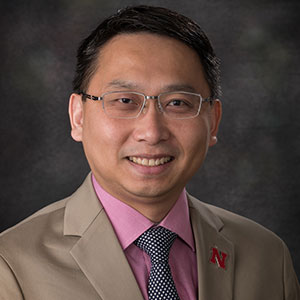| Title |
Education Background |
Research Interests |

Principal Investigator |
Barry Chin Li Cheung |
My research group focuses on the study of nanomaterials chemistry. We are studying the synthesis mechanisms of new materials and their physical and chemical properties with a specific context. The different types of materials we have studied include: Bio-inspired materials, biocomposites, defect engineered catalysts, thermal neutron converter coatings, and low dimensional rare-earth nanostructures. |

Graduate Student |
Erika De Leon |
Cerium oxide is known for its catalytic activity stemming from its oxygen vacancy defects. Currently I am working on increasing the oxygen vacancy defects in ceria nanoparticles by doping the nanoparticles with 3d-transition metals. My goal is to then determine the antioxidant properties of these doped ceria nanoparticles and compare them to their pure metal oxide counterparts. |

Graduate Student |
Priya Boora |
Plasma catalysis is the combination of a catalyst with a plasma to catalyze the conversion of various gas chemicals. Nanostructured cerium oxide (CeOx: x = 1.5 to 2) has catalytic properties to promote redox reactions originating from its intrinsic oxygen capacity and release capacity that is associated with the formation of oxygen vacancy defects. My current research focuses on studying the roles of doped ceria for the CO2 hydrogenation to C2-organic molecules via plasma catalyzed reactions. I am also interested in studying various doped ceria synthesis method to make the process more efficient. |

Graduate Student |
Kyle Schuelke |
My research focuses on the generation and use of plasma-activated chemicals. Plasma activated chemicals is made when a plasma activated gas (such as air) is forced into a chemical solution. This leads to the production of different reactive oxygen and nitrogen species which then react and modify (“activate”) the target chemical. This “activated” liquid can be used for a variety of applications. For example, plasma activated water can be used for antibacterial applications and remediation of organic pollutants. Currently, I am studying the production of different plasma “activated” chemicals and their biological applications. |